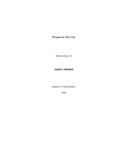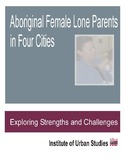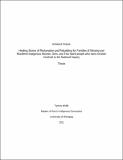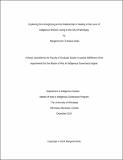| dc.contributor.author | Allentuck, Sarah A. | |
| dc.date | 2004 | |
| dc.date.accessioned | 2014-10-15T19:09:50Z | |
| dc.date.available | 2014-10-15T19:09:50Z | |
| dc.date.issued | 2014-10-15 | |
| dc.identifier.isbn | 1-894858-14-X | |
| dc.identifier.uri | http://hdl.handle.net/10680/759 | |
| dc.description | Paper: ii, 16 pp., digital file | en_US |
| dc.description.abstract | That many women experience disadvantage in urban areas is, to some extent, due to misconceptions and false
assumptions regarding their needs on the part of the city planning profession. The author explores some of the
negative consequences of city planning as they affect women — economically disadvantaged women in particular.
Concentration is placed on the historical causes of, and possible solutions to, inequities in housing, transportation,
childcare and safety. Examples of Winnipeg are cited | en_US |
| dc.description.sponsorship | Institute of Urban Studies | en_US |
| dc.language.iso | en | en_US |
| dc.publisher | Institute of Urban Studies | |
| dc.relation.ispartofseries | Student Paper;21 | |
| dc.rights | info:eu-repo/semantics/openAccess | |
| dc.subject | Women and city planning | en_US |
| dc.subject | Urban women -- Social conditions | en_US |
| dc.subject | Urban women -- Economic conditions | en_US |
| dc.subject | Feminist geography | en_US |
| dc.subject | Urban health | |
| dc.subject | Women | |
| dc.subject | Gender | |
| dc.subject | childcare | |
| dc.title | Women in the City | en_US |
| dc.type | Article | en_US |




